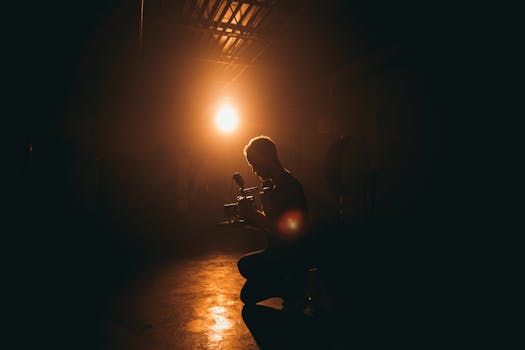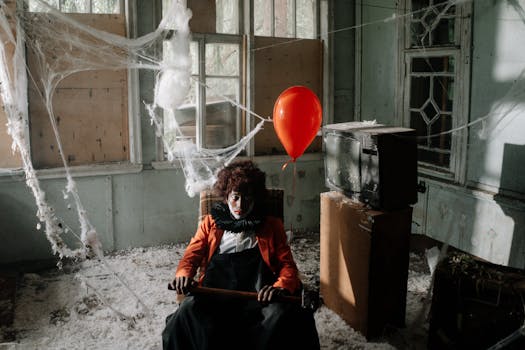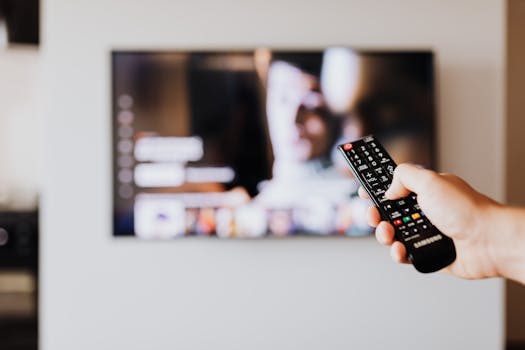TV Shows
How Costume Design Builds TV Character Identity
See how tv costume design shapes character identity and story in your favorite shows. Discover the artistry, process, and the choices that make TV characters unforgettable and true to their world.
Advertisement
You recognize your favorite character before they speak, thanks sometimes to the magic of tv costume design. The right outfit, cut, or color tells you a story without words, giving depth to personalities before any lines are spoken.
Viewers bond quickly with characters based on subtle visual cues. Costume choices deliver layers of meaning and shape first impressions, subtly signaling quirks, struggles, and allegiances that writers and actors then build upon.
In this article, you’ll discover the actionable details and behind-the-scenes decisions that shape unforgettable tv shows and reveal the must-know principles of tv costume design every fan and creator should appreciate.
Defining Character Backstories with Signature Wardrobe Rules
Costume designers ground every character in tangible reality with wardrobe rules that reflect backstory and daily routine. Following these guidelines helps audiences immediately “read” who each person is and what drives them.
Choosing distinct colors and fabrics can instantly code characters as approachable, wealthy, anxious, or rebellious. Behind every wardrobe on screen lies a structured checklist for backstory alignment and consistency.
Checklist for Building Consistency
Before dressing a recurring role, designers run through a wardrobe checklist: family background, work setting, emotional armor, and lifestyle. “She wears her dad’s old jacket because she clings to his memory,” a designer might note.
Wardrobes become memory triggers, revealing core elements. Reliable costume patterns anchor viewers in a show’s world, so a piece’s repetition becomes iconic—think of a detective’s rumpled trench coat in a gritty tv costume design context.
Step-by-step, each new scene requests a logic check. Does this piece fit her journey or is it visually jarring? Regular reviews keep characters relatable and evolving.
Backstory through Everyday Details
Accessories and repeated basics serve as shorthand for routine and priorities. A character who habitually wears scuffed boots signals practicality and maybe a disregard for appearances—each scuff earned on screen, not from a store.
Even color choices can tell stories. An anxious character may wear soft, muted fabrics to reflect their desire to blend in with their surroundings, a principle proven in longtime tv costume design success stories.
Mixing in a single, bold accessory can signal a turning point—a tie in a new color or a necklace with emotional resonance. These subtle cues invite viewers to watch closely and interpret meaning.
| Costume Element | Backstory Link | Emotional Cue | Takeaway for Viewer |
|---|---|---|---|
| Leather Jacket | Punk, Rebellion | Defiance | Expect risk-taking or pushback |
| Pressed Suit | Corporate, Authority | Confidence | Look for strategic moves |
| Faded Band Tee | Nostalgia, Youth | Vulnerability | Seek connections to the past |
| Practical Boots | Working Class, Strength | Resilience | Notice persistence through difficulty |
| Handmade Scarf | Family Ties | Sentimental | Watch for references to loved ones |
Conveying Transformation through Deliberate Style Shifts
Tracking how costumes change as a show unfolds reveals character evolution—sometimes quietly, sometimes dramatically. These shifts are deliberate, helping audiences witness growth, trauma, or power shifts in real time.
Creators orchestrate these evolutions with clear intent using visual language familiar to any watcher of nuanced tv costume design, making story arcs instantly legible.
Key Steps to Mark Major Changes
To show change, designers first select new silhouettes or color palettes for turning points. For instance, when a shy teen gains confidence, brighter, more fitted clothes replace slouchy neutrals.
It’s a sequence: old look, inciting event, reveal new look. By episode’s end, viewers sense the moment a transformation solidifies—this is the heart of tv costume design’s narrative power.
- Swap color schemes to signal fresh confidence and optimism, like moving from grays to primary colors when a character embraces new challenges.
- Rework accessories so past loves or themes are replaced—wearing a sister’s necklace after making peace with family history, for example, marks turning points.
- Alter fit and posture cues as visual confirmation of change—a new, tailored outfit invites actors to move differently, grounding performance shifts organically.
- Layer clothing for complexity when a plot thickens; more or heavier garments signal both literal and metaphoric burdens increasing for the character.
- Remove signature pieces to symbolize loss or independence—leaving behind a parent’s jacket might demonstrate breaking free or embracing adulthood.
As a result, the audience senses transformation before dialogue, which is why careful tv costume design can make plot growth unforgettable.
Mini-Checklist for Correction
Sometimes, changes need tightening—spot filler or confusion by rewatching an episode and noting if one character stands out for the wrong reason, visually.
Compare costumes across an arc. Consistency keeps the focus on narrative, not distractions. “Her fiery red jacket clashed here,” might be a note worth changing.
- Correct visual pacing by aligning major wardrobe shifts to plot beats, not at random. This builds trust and anticipation in every episode of a tv costume design-heavy series.
- Reintroduce earlier themes if they become relevant again: bring back an old accessory to close a story loop, making audiences feel included in the journey.
- Sharpen silhouette changes only when there’s a clear turning point. Subtle changes before, bold ones during, allows for a ramp-up without confusion.
- Focus on continuity checks. Take photos and refer to style boards so the evolution isn’t jarring across scenes filmed days or weeks apart.
- Document reasons for each change: logging “after betrayal, favors armor-like materials” can keep transitions meaningful, especially for long-running tv costume design-driven shows.
Tightening style shifts amplifies character arcs—something truly great tv shows do with precision and flair, not by chance.
Matching Genre Vibes with Costume Choices
Genres guide every costume choice, and designers adapt rules to honor audience expectations. Whether it’s period drama or speculative sci-fi, the logic behind each costume supports immersion and believability in different tv shows.
Designers research, prototype, and adjust clothes so they complement the storytelling style—mirroring the show’s tone and era for unbroken world building that stands out on screen.
Applying Genre-Specific Techniques
Costume designers cultivate authenticity by tailoring approaches to the show’s genres. In procedural dramas, neutral, practical attire keeps focus on the case. In dark comedies, designers might inject wry humor with mismatched prints or ironic graphic tees.
In more futuristic tv shows, metallic details or exaggerated shapes signal another world. By balancing realism and genre signature, a skilled designer ensures costumes don’t distract but deepen the experience.
For fantasy, layering and unusual materials—like velvet cloaks or leather armor—signal otherness, giving both actors and viewers visual cues about what’s possible within the show’s internal logic.
When Costume Contrasts Are Deliberate
There are moments where genre rules bend to make a point. A modern detective in vintage shoes can highlight nostalgia, foreshadowing backstory revelations or unique thinking.
Juxtaposition is a persuasive tool—wise designers might costume a comedic villain in a color typically reserved for heroes, subverting genre tropes to surprise engaged viewers who watch closely.
Breaking expectation on purpose means every decision, even if off-genre, still rests on character truth—this is a hallmark of the best tv costume design in top-tier tv shows.
Strategic Color Coding to Build Associations
Color operates as a character-defining shortcut in any tv costume design. When used intentionally, palette choices provide instant recognition, align group loyalties, or telegraph emotional states before dialogue occurs.
Smart use of color across seasons and arcs creates lasting associations and can anchor thematic storytelling, helping audiences track loyalties, mood shifts, and conflicts with a single glance.
Building Color Associations Properly
Designers define a primary palette for main characters in early stages—blues for calm, reds for passion, earth tones for reliability. Each hue then reappears in variations as plotlines develop or relationships shift.
A quick scan can tell viewers that “red signals rebellion for this character” or “green equals calm,” reinforcing subconscious understanding. This trick is critical for big ensemble casts in sprawling tv shows.
When tension peaks, swapping to jarring colors can jolt the audience: a normally reserved character in a bold, unfamiliar color foreshadows a challenge or personal struggle that fans will spot immediately.
Contrast and Harmony Rules
Costume designers avoid color chaos by observing contrast and harmony rules. If two best friends wear clashing shades, designers can signal discord, even before the plot explores their fallout.
For harmony, color echoes across multiple characters can tie subplots or families together, reinforcing themes like unity, tradition, or shared fate. Audiences subconsciously register these links, deepening engagement with the tv costume design choices.
Occasionally, abrupt color shifts stand for internal upheaval—”He walked in wearing all black. Something had changed.” A rule: use shifts sparingly so each one retains narrative weight.
Crafting Physical and Emotional Vulnerability Through Accessories
Accessories lend power to tv costume design by adding another communication layer—sometimes signaling protection or, at other times, exposing character vulnerability. Each piece is chosen to reveal new layers without breaking immersion.
An accessory can read as emotional armor or a signal of openness, depending on its placement, wear, and relationship to the actor’s behavior in a given scene.
Layered Meanings in Accessories
Layering bracelets, scarves, or pins announces a protective, guarded nature. “When I have my rings, I feel together,” a teen character says, intuitively grasping her own need for security.
For an exposed or grieving character, designers may intentionally remove accessories to visually communicate loss, disconnection, or the beginning of an emotional unraveling—a simple, effective tv costume design cue.
Switching out pieces to match new relationships or revised priorities mirrors how people adapt favorite items as their lives change—translating realistic habits to on-screen storytelling.
Strategic Placement for Emotional Impact
To achieve authenticity, costumes with uneven symmetry, such as one earring missing, draw attention to moments of vulnerability or unfinished growth. This technique is often used at pivotal moments for relatable characters.
Conversely, adjusting the position of a scarf—tight during stress, loose when relaxed—reflects internal states through physical action, giving actors a subtle performance tool to deepen their portrayal.
Each detail can become iconic through repeated use, like a worry stone always in pocket or a hat tipped when hiding emotion, cementing the symbolic vocabulary of a tv show.
Balancing Realism and Escapism for Impactful Worlds
Great tv costume design must balance everyday authenticity with escapism to build a world where viewers invest emotionally. This blend makes characters relatable and their stories compelling, even when settings stretch reality.
Designers reference real trends but heighten details—think slightly exaggerated collars or bespoke prints unique to a fictional city—so costumes feel just one step removed from your daily life.
Escapism without Losing Credibility
Injecting fantasy elements requires a light touch. Costume teams create composed eccentricity—maybe a cape with familiar tailoring—keeping viewers grounded yet open to boundless storytelling.
Realism is always double-checked against story logic. Even the most outlandish getup must echo something true about the character, blending escapism and narrative cohesion effectively in tv costume design.
Creators run wear-tests, seeing if actors move naturally in fantastical clothes; results are then tweaked to keep both comfort and immersion intact for demanding shoots.
Building Cohesive Worlds Amid Disparate Elements
When multiple genres collide in a single show, cohesion comes from consistent fabric choices, repeated motifs, or shared accessory themes, even as characters’ specific costumes differ widely.
This strategy ties disparate plotlines and settings into one believable universe, inviting viewers to relax into the world—regardless of its strangeness—because internal logic holds.
Maintaining this balance invites fans to invest in the world of the show, making characters and their arcs more impactful and memorable over time.
Bringing It All Together: Costume Design as Narrative Engine
Throughout every episode, tv costume design remains an invisible narrator, conveying emotional truths, personality shifts, and evolving loyalties above and beyond dialogue alone.
The best tv shows seamlessly integrate visual character cues with writing and performance, building a richer, more immersive viewing experience audiences remember long after the credits roll.
Every shirt, shoe, and earring becomes a storytelling tool—inviting viewers to decode meaning, relive moments, and bond with characters on a visceral level as the tv series progresses through seasons.
Trending Topics

How Editing Turns Raw Footage Into Movie Magic: The Power of Film Editing
Learn how film editing transforms raw footage into seamless visual storytelling that drives rhythm, tone, and emotion.
Keep Reading



